Shipping crown and bridge cases internationally requires more than careful handling—it demands strategic packaging and precise labeling. Even small oversights can result in delays, damage, or case confusion that disrupt clinical schedules and erode trust.
Yet many clinics and DSOs underestimate how shipping impacts delivery accuracy, rework rates, and overall workflow integration. A missed label or unclear separation can create far-reaching operational friction.
To reduce these risks, global dental labs must align with client expectations across every touchpoint—from case segregation and barcode formats to customs documentation and clinic-specific intake systems. Packaging is no longer just physical protection; it’s part of the data and workflow pipeline.
This article outlines what dental procurement teams should examine when evaluating overseas lab partners:
- Which packaging materials best protect single-unit vs. multi-unit restorations
- How internal labeling standards reduce the risk of case mix-ups
- What shipping documentation ensures customs compliance and tracking continuity
- How to assess a lab’s ability to match your labeling and software protocols
- What to include in a checklist when reviewing your first trial shipment
By mastering these elements, clinics can ensure safer deliveries, smoother intake, and stronger long-term collaboration with overseas dental labs.
Why Is Proper Packaging and Labeling Crucial for International Crown & Bridge Shipments?
Proper packaging and labeling play a decisive role in ensuring the safety, traceability, and timely delivery of crown and bridge restorations during international shipping. Inconsistent labeling or inadequate packaging doesn’t just increase breakage risk—it jeopardizes clinical schedules and patient trust. Understanding the downstream impact of these oversights is critical before engaging any overseas dental lab.
Unprofessional packaging or unclear labeling can lead to case mix-ups, customs delays, product damage, and even lost cases. For overseas shipments, packaging isn’t just protection—it’s part of the communication system between clinic and labWhat risks are involved in overseas shipping for dental restorations?
International shipping exposes dental restorations to multiple stress points: vibration, compression, humidity, and customs handling. Even small fractures or internal dislodgement of a bridge unit during transit can render the entire case unusable. We’ve encountered situations where a clinic’s anterior 4-unit bridge was returned fractured due to a loose inner casing and insufficient padding.
In addition to physical risks, documentation errors (such as missing customs codes or illegible case IDs) can trigger delays of days or even weeks. Overseas clients have told us that even a single misidentified case can disrupt their clinic’s scheduling and undermine patient confidence.
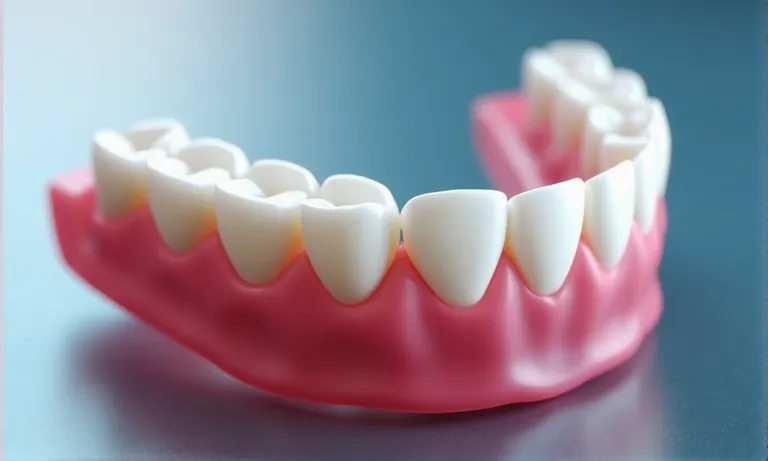
How do packaging and labeling affect product safety and case identification?
- Packaging provides mechanical protection from shock, moisture, and stacking during long-haul shipping. For example, dual-layer cushioning is essential for multi-unit restorations.
- Labeling ensures case traceability at every touchpoint—from lab to customs to clinic. If a box contains five individual cases, each must be distinctly labeled with identifiers that match clinic records.
- Proper external labeling (e.g., “Fragile Dental Work – Crown & Bridge”) also signals carriers to handle the parcel with care.
What are common issues caused by poor labeling or inadequate packaging?
- Cases arriving mixed with no clear patient ID or reference code
- Units damaged due to insufficient internal cushioning
- External labels missing, leading to delayed customs clearance
- Clinics spending hours tracing which case matches which patient
Such issues often result in refabrication, patient dissatisfaction, and ultimately, added cost on both sides.
What packaging errors often cause delivery delays or product loss?
- Single case boxes packed loosely inside large cartons without individual immobilization
- Labeling printed only in local language, making it unreadable by international customs staff
- Failure to include commercial invoices or HS codes, blocking clearance at customs
- Using reused boxes that compromise integrity during international transport
We’ve seen clinics penalized with import storage fees just because a shipment lacked proper invoice documentation.
By proactively addressing these avoidable issues, dental labs can help clients protect both clinical outcomes and logistic efficiency.
In our collaboration with clinics across the US and Europe, packaging and labeling has become a joint checkpoint in the onboarding process. A client once told us: “The first thing I check in a new lab trial isn’t the crown margin—it’s whether the box makes sense.”
You can refer to this overview of shipping hazards in dental logistics for more insight on real-world shipping challenges.
When labs treat packaging and labeling as an extension of client workflow—not a shipping afterthought—it becomes a trust driver. As an overseas dental lab, we treat every case box not just as cargo, but as a clinical commitment that must arrive intact and traceable.
What Packaging Materials Are Best Suited for Crown & Bridge Shipments?
Choosing the right packaging materials is not just about protection—it’s about ensuring precision dental work arrives safely, undamaged, and presentable. Overseas shipping adds layers of stress—impact, compression, temperature shifts—that demand tailored packaging at both inner and outer levels.
Unfit or generic packaging can lead to cracked units, distorted margins, and moisture damage that clinics may only notice after seating attempts. Dental labs must select packaging materials that can handle real-world shipping pressures and support the clinical value of what’s inside.

What types of inner and outer packaging protect against impact and moisture?
- Inner tray with locking lid: Holds the crown or bridge securely and prevents micro-movement during transport. For anterior units, a foam or silicone base is especially critical.
- Moisture-barrier seal bags: Help protect against humidity changes, especially in air or sea freight.
- Outer rigid carton: Double-walled or crush-resistant boxes add mechanical protection from stacking and drops.
- Void fillers: Air pillows or paper fill reduce shifting inside cartons, minimizing breakage risks.
A client once told us, “What convinced me wasn’t the zirconia, but that your tray didn’t rattle when I shook the box.”
How do materials differ for single-unit vs. multi-unit restorations?
| Case Type | Inner Packaging | Outer Packaging |
|---|---|---|
| Single-unit crown | Small snap-on capsule tray with foam insert | Compact rigid box, no internal movement |
| Multi-unit bridge | Wide tray with segmented compartments, foam lining | Oversized moisture-proof box with layering |
| Full-arch | Customized immobilization base, sometimes 3D-printed | Reinforced crate-style box with warning labels |
Each layer serves a function: immobilization, moisture control, and impact resistance.
Can eco-friendly materials meet international shipping standards?
In many regions, yes—but only with proper design. Corrugated recycled boxes can match strength ratings of virgin fiber cartons if thickness and wall layering are optimized. Biodegradable air pillows and molded pulp trays are now accepted in most EU import hubs.
However, one critical rule remains: do not compromise rigidity or moisture control just for sustainability points. Overseas clinics still prioritize intact delivery over eco-packaging if both cannot be achieved.
In our recent EU trial partnership, a DSO requested plastic-free packaging. We co-developed a hybrid pack using starch-based fill and high-strength kraft outer wrap—earning approval for wider rollout.
For more details on medical device packaging standards, you can refer to ISO 11607-1 guidelines governing shipment safety.
When materials are selected not just for cost, but for compatibility with clinical use and logistic realities, they protect more than products—they protect trust. As an overseas dental lab, we work closely with clients to match packaging to restoration type, delivery time, and even local climate conditions.
How Should Individual Cases Be Separated and Labeled Inside the Package?
For overseas dental shipments involving multiple cases, internal separation and labeling is not just a matter of organization—it’s a safeguard against costly clinical errors. When multiple crown or bridge cases arrive mixed, unlabeled, or improperly referenced, it becomes nearly impossible for the clinic team to assign restorations correctly.
Every case must arrive in a way that makes it unmistakably clear: what belongs to whom, and how it should be handled upon receipt.
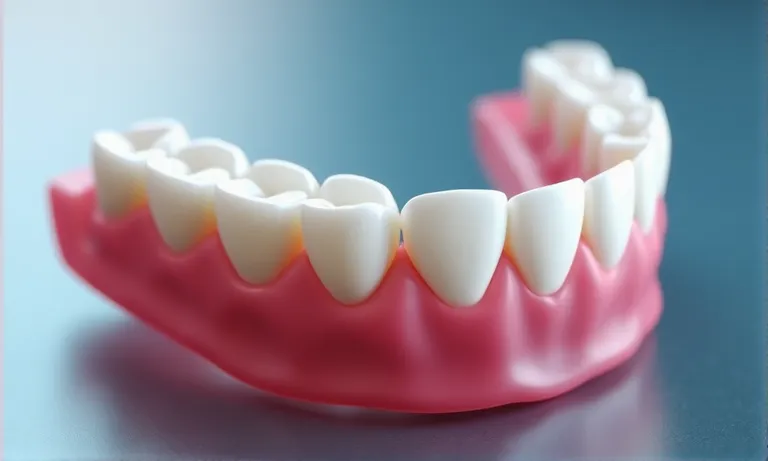
What labeling standards help avoid confusion between multiple cases?
- Consistent position of labels: All trays should display patient/case info in the same visible location.
- Dual-reference format: Use both clinic reference (e.g., booking or chart number) and a unique case ID from the lab.
- Waterproof & smudge-proof print: Thermal labels are preferred over handwritten tags for clarity and longevity.
- Readable font size: Especially important for clinics that process 20–50 cases per delivery.
A DSO client in Florida once shared, “It’s not the number of cases that bothers us—it’s when we have to guess which crown goes where.”
Should you include patient ID, case ID, or clinic reference?
Ideally, all three. Most dental labs now use systems that can cross-reference these IDs, and many clinics rely on barcode scanners for intake. Including:
- Patient name/code for front-desk confirmation
- Clinic internal reference number for software linking
- Lab-side case ID for rework or tracking
These identifiers reduce communication back-and-forth and improve traceability in audit trails.
What case separation methods prevent cross-contamination or mix-ups?
| Method | Description | Benefit |
|---|---|---|
| Individual hard trays | Each case stored in its own snap-shut plastic tray | Prevents physical damage or contact |
| Foam/paper separators | Between trays inside the shipping box | Adds vibration protection |
| Colored tray stickers | Color-coded trays by case or doctor | Easy clinic-side visual sorting |
| QR-code labeled zip bags | Each bag includes restoration + digital label | Seamless digital/physical tracking |
In one trial shipment for a UK-based clinic group, we introduced a color-coded tray plus barcode system. The client reported a 40% reduction in unpacking time and flagged zero identification issues over three months.
You can read this industry breakdown on case identification best practices for more applied ideas.
When each case arrives clearly labeled, cleanly separated, and traceable across both clinic and lab systems, it reflects a supplier’s respect for the workflow on the receiving end. As an overseas dental lab, we don’t just ship—we co-deliver clinical clarity.
What External Labeling and Shipping Documents Are Required for Customs and Tracking?
External labeling and documentation are critical checkpoints in international dental logistics. Without compliant and legible labels, even a perfectly fabricated crown can be delayed or held in customs—costing both time and client confidence.
Overseas-bound cases must meet both logistics and regulatory standards, which vary slightly by region but follow a core framework.
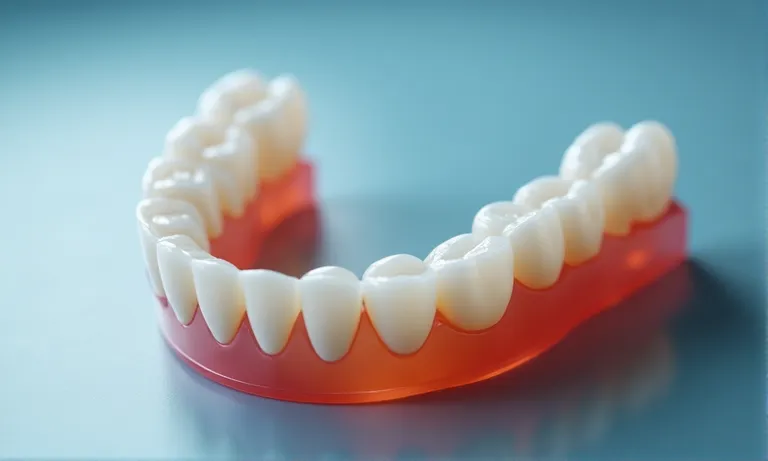
What information should appear on the external shipping label?
- Clinic name and address (must match the invoice and import record)
- “Fragile – Crown & Bridge” warning label
- Sender information with lab’s export license or EORI number (where required)
- Package contents in English, e.g., “Zirconia crown for dental restoration”
- Tracking barcode from the chosen carrier (DHL, FedEx, UPS)
- Return label in case of nondelivery or customs rejection
Some DSO clients prefer “white-label” shipping with minimal lab branding—this can be coordinated upon request.
How should customs forms and commercial invoices be handled?
Customs forms are non-negotiable in cross-border shipping. For example:
- CN22/CN23 forms are required for postal shipments (e.g., EMS, USPS)
- Commercial invoices are required for courier shipments (e.g., DHL, UPS)
- Must declare item as: “Dental prosthetics for medical use – non-commercial sample”
- Include HS Code: 9021.21 for artificial teeth and parts
Failure to include the proper HS code or under-declaring value often leads to shipment holds.
In one case, a client’s shipment to Canada was delayed for 7 days due to a missing lab signature on the invoice. We now use a standardized export template reviewed before every pickup.
What barcode or QR code formats support clinic tracking systems?
- 1D barcodes (e.g., Code 128 or Code 39): most compatible with legacy clinic systems
- 2D QR codes: better for modern DSO platforms that scan via mobile or tablet
- Label placement: always near the corner of the box, not under tape
- Optional encoding: Some labs embed patient ID + restoration type in the QR
We’ve supported clinics using Dentrix, EagleSoft, and Oryx by adjusting our shipping label output to match scan requirements.
A dental lab that treats documentation as part of delivery—not an afterthought—helps ensure smoother customs clearance and stronger clinic-side coordination. As an overseas manufacturing partner, our job is not just to fabricate—but to help the case arrive when it’s supposed to.
How Can Dental Labs Help Clients Customize Labeling and Packaging Based on Clinic Workflow?
No two clinics process cases the same way—especially when managing multiple providers, branches, or intake protocols. For overseas dental labs, the ability to adapt labeling and packaging workflows to each clinic’s specific environment isn’t a value-add—it’s a baseline for long-term collaboration.
Customization reflects not just flexibility, but respect for how the client runs their day.
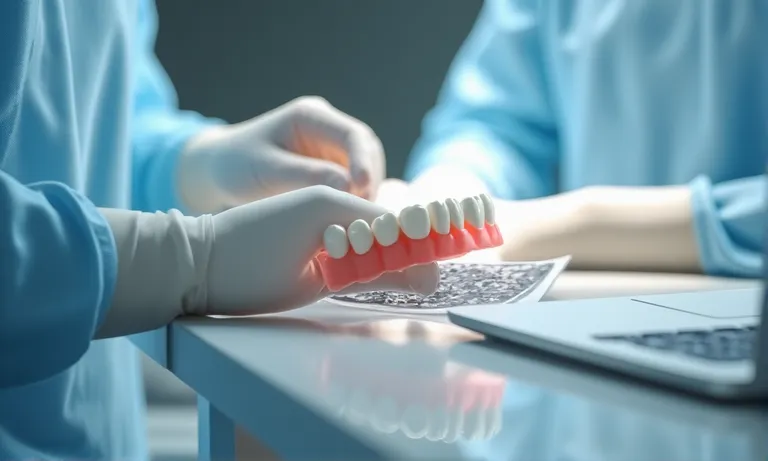
Can the lab match labeling formats to clinic software or barcode systems?
A cloud-based DSO in Australia struggled with intake delays caused by manual entry of patient data from incoming trays. Their workflow required QR-code scanning directly into their ERP system—but their previous lab didn’t support any digital labeling.
When we onboarded them, our team customized a labeling format that matched their platform’s field mapping (patient ID, case type, delivery batch). Within two weeks, their intake time dropped by more than a third. The change was simple—but for them, it was transformative.
This level of integration helps clinics maintain accuracy and scale logistics across locations without adding administrative overhead.
How flexible is packaging customization across different regions or DSO branches?
- North America: Clinics often request branding-neutral packaging with internal case color coding.
- Europe: Clients may prioritize recyclable or biodegradable materials for compliance.
- Asia-Pacific: Some clinics prefer added security like tamper-evident seals or humidity barriers.
What works in one market may be unworkable in another. Labs that handle multi-regional clients must be willing to adjust formats, materials, and labeling conventions case by case.
What support does the lab provide for packaging documentation?
- Packing slips tailored to clinic preference
- Case reference photos sent digitally in advance
- Barcoded invoices mapped to batch shipments
- Optional white-label delivery notes for client-facing workflows
These small pieces help procurement teams, front-desk staff, and inventory managers stay in sync—especially under pressure.
How can the lab align package labeling with clinic workflow patterns?
Some clinics sort by chairside provider, others by date or procedure type. We’ve worked with clients who requested labeled cartons by chair number so their technicians could hand off cases without opening them. For another group, we aligned our case sequence with their internal routing logic—no relabeling needed on their side.
When a dental lab aligns packaging with clinic behavior, it reduces daily friction. As a global dental lab, we see packaging not as a finish line—but as a handshake at the delivery point.
What Are the Best Practices to Minimize Risk During Long-Distance Transportation?
Once a crown or bridge leaves the lab, every mile it travels introduces potential disruption. Damage, delay, or loss during shipping not only affects a single case—it can ripple into clinical rescheduling, emergency reorders, and loss of trust.
Preventing these issues starts at the packaging table, not at the shipping counter. Labs must prepare each box with both mechanical reality and clinical urgency in mind.
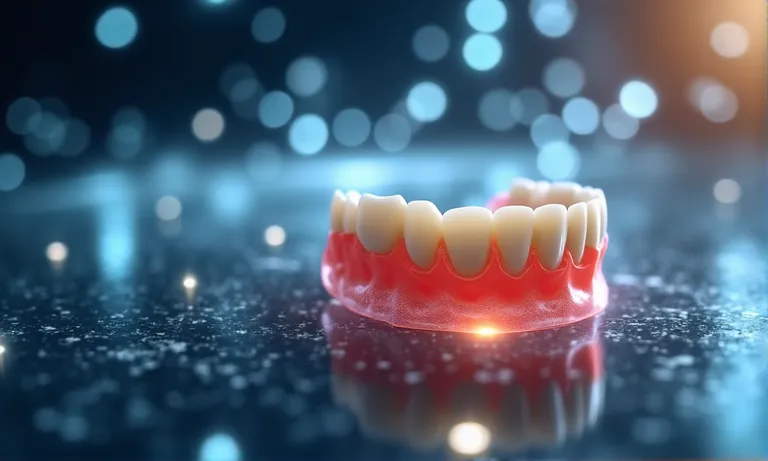
Should temperature, vibration, or humidity protection be considered?
Yes—especially for multi-day international routes. Clinics in humid or tropical regions often report swelling or discoloration on unprotected materials, while long-haul air shipments can expose packages to sharp temperature drops.
- Humidity control: Use silica gel packs or sealed inner pouches
- Shock protection: Include foam or elastic mounting trays
- Temperature buffers: Avoid thin-wall packaging; opt for double-layered cartons
In one Southeast Asian delivery, a technician noticed light corrosion on a bridge due to exposure from an improperly sealed box. We now use waterproof wraps for any shipment transiting coastal customs zones.
How can packaging design reduce the chance of loss or delay?
Many shipment issues trace back to labeling placement or packaging shape. A small carton with a label wrapped over the edge can confuse scanners, and odd dimensions often get pulled for manual inspection.
Design practices that reduce these risks include:
- Flat label surfaces: Ensure no folds or tape interfere with scanning
- Standardized box sizes: Fit courier equipment and avoid flagging
- Avoid over-packing: Consolidating too many cases can increase customs review
Labs that treat each box as a self-contained data object—not just cargo—improve tracking continuity from factory to front desk.
Are there insurance or guarantee protocols for high-value shipments?
Clients should always clarify this during onboarding:
- Full-value declared shipments via FedEx/DHL offer basic protection
- Third-party insurance can cover custom-fit, high-value bridge cases
- Pre-authorized rework protocols can minimize turnaround if damage occurs
- Loss-prevention inserts (tilt sensors, shock stickers) demonstrate accountability
You can consult this shipping insurance guide for dental devices for deeper insight into policy options.
When a lab builds its transportation logic around failure scenarios—not just best-case assumptions—it earns a different kind of trust. As a production partner, we see secure transit not as a logistic add-on, but part of delivering the clinical outcome.
What Should Clients Review in Their First Trial Shipment?
A first trial shipment is more than a logistics test—it’s a window into whether the lab understands your clinical priorities, workflow pace, and operational standards. Clear expectations, objective checks, and timely feedback form the foundation for any long-term collaboration.
Labs and clinics that treat the trial as a structured evaluation—not just a formality—make better long-term decisions.
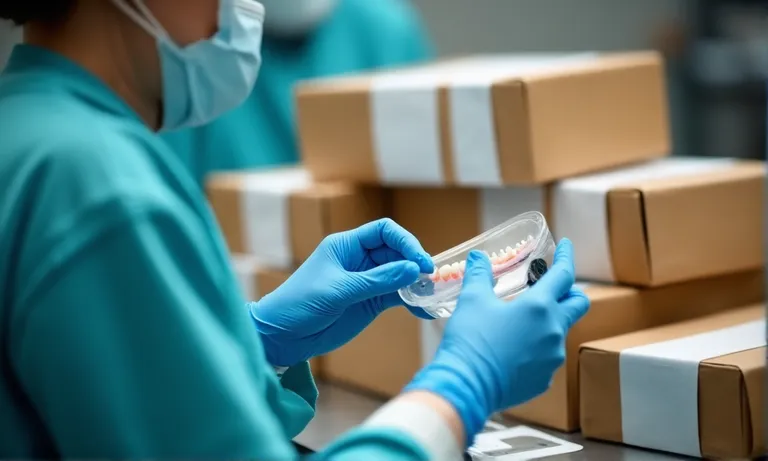
What checklist can help evaluate packaging and labeling quality?
- Is each case clearly labeled with clinic reference and patient ID?
- Are trays separated to prevent contact or confusion?
- Do outer boxes include tracking, customs, and return info?
- Are fragile markings and restoration types visible on external labels?
- Did the package arrive intact and on time?
We’ve seen clinics create shared spreadsheets with labs to mark “yes/no/issues” on each of these points—simple, but effective.
What signals indicate potential risks or mismatches?
- Cases arrive out of sequence or unlabeled
- Handwritten tags instead of printed identifiers
- No internal separation for multi-case boxes
- Trays arrive damp, cracked, or loosely packed
- Discrepancies between packing slip and actual contents
Any of these signs should be noted, not overlooked—especially in a first shipment.
How should feedback be communicated and followed up?
Open dialogue is key. Some clinics use annotated photos to show issues, while others prefer structured intake reviews. We’ve found the most productive feedback happens within 48 hours of receipt—when the shipment is fresh and traceable.
From our side, we log every issue reported during a trial period and assign follow-up actions: packaging changes, label updates, internal SOP revisions. The speed of this loop often determines how fast full-scale cooperation can begin.
What should be included in an export packaging checklist for crown & bridge cases?
| Review Item | What to Look For | Flag if… |
|---|---|---|
| Tray Label Accuracy | Clinic ID + Patient ID + Case ID | Any part missing or illegible |
| Case Separation | Physical dividers or separate trays | Multiple cases touching |
| External Labeling | Fragile + Restoration Type + Tracking Barcode | Partially covered or torn |
| Document Completeness | Packing list + Invoice + Customs form | Missing or inconsistent |
| Arrival Condition & Timing | Clean, dry, on expected date | Delay, damage, or seal breached |
When both sides treat the trial seriously—clear standards, real feedback, and fast response—the result is more than a safe delivery. It’s proof that the lab can deliver reliability, not just restorations. As a lab partner, we consider trial shipments not as tests of product, but as tests of alignment.
Conclusion
In international crown & bridge logistics, packaging and labeling are not just operational details—they’re trust signals. From protective materials to workflow-aligned labeling, every element influences delivery reliability and clinical readiness.
Well-executed packaging reflects not only manufacturing precision, but also a lab’s ability to collaborate across systems, regions, and expectations. As an overseas dental lab, we see every shipment as a shared responsibility—not just to deliver restorations, but to support outcomes.
For clinics evaluating new suppliers, how a lab packs its first box often speaks louder than any brochure.


